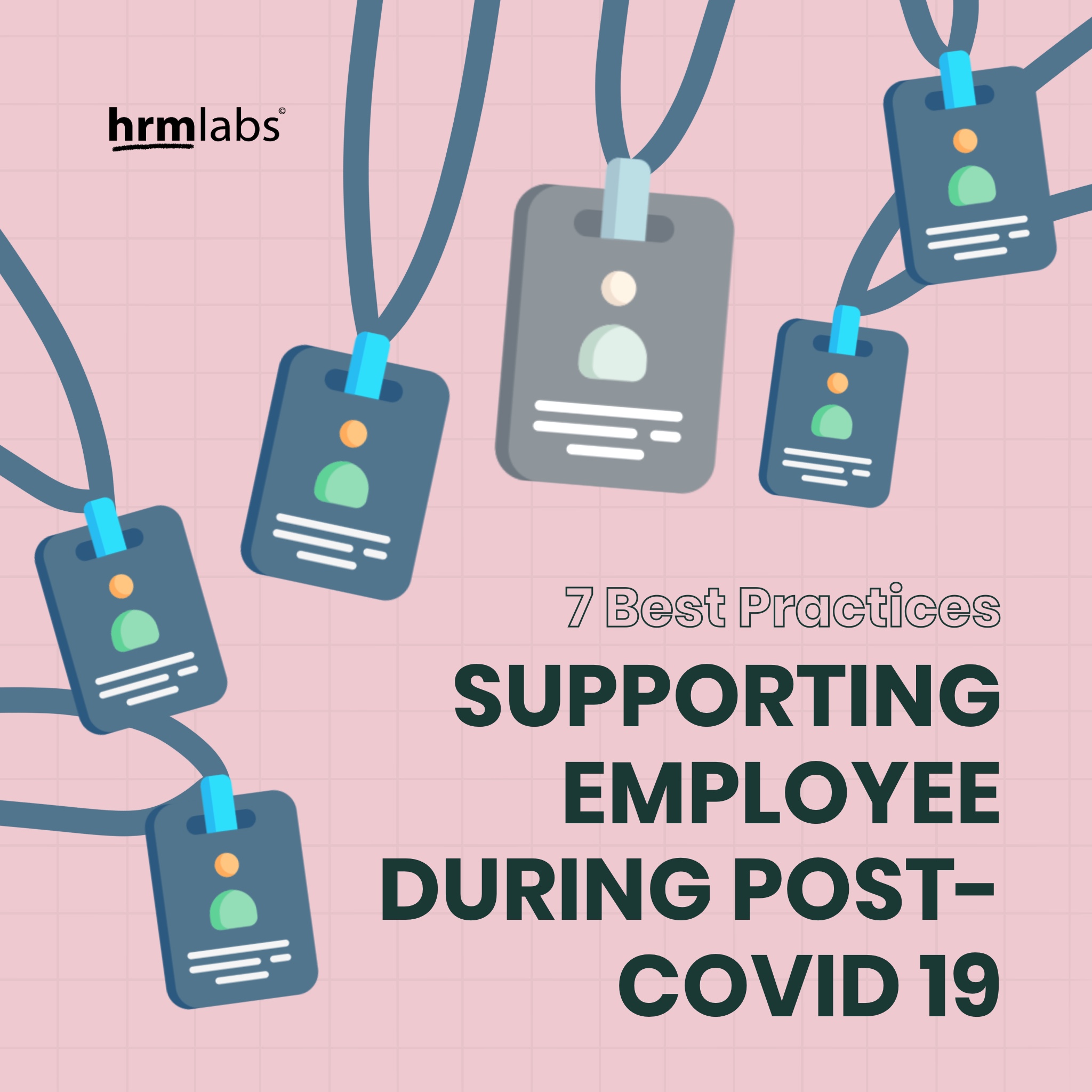As many businesses across Singapore fully or partially reopen while the Post of COVID-19 pandemic. They face the extraordinary challenge of keeping workers safe. While following state and local health guidelines is an important step toward reopening, employers may also want to think about additional ways to support employees in this uniquely difficult environment.
Here are 7 ways businesses can support employees returning to offices, shops, and worksites around the country as coronavirus fears persist.
1. Set up regular 1:1 meetings with staff you’re concerned about
If you’re getting a sense that someone in your team needs support, make sure you follow up. Preferably in a private setting or on a 1:1 meeting where you can encourage them to speak openly about their feelings.
“Regular check-ins in a one-on-one capacity from early on is recommended and will make these discussions easier,”
HR Expert says
Be conscious of asking open-ended questions. For the example : ‘Tell me about the new normal working arrangement – how is it working out for you?’. It’s better rather than queries with a yes/no answer – this will help you better gauge what might be going on.
2. Enhanced sanitation and build-out for social distancing
One of the most important ways to support employees during reopening is to follow pandemic best practices regarding sanitation and social distancing. Employers should think about how to utilize spaces differently than before. At least six feet of space between employees. And if possible, installing physical barriers to help prevent the transmission of airborne germs.
3. Mental and emotional support
The coronavirus crisis has taken a toll on the mental health of workers, especially for those on the front lines. However, employees of all kinds can show signs of anxiety. Whether they have concerns about contracting the virus, prolonged social isolation or family members or friends who are sick. To help counter this, employers can consider providing free mental health and wellness services.
The vice president of strategy at WebMD Health Services, wrote in Business Insider. “The World Health Organization estimates that for every dollar employers invest in treating common mental health issues, they earn $4 back in increased employee health and productivity.”
Some companies recently added mental health benefits to help employees during the COVID-19 crisis. The company said all of its team members and their families can contact an emotional support line to speak to a mental health specialist at no cost.
4. Staggered shifts
One additional way to support employees returning to work is to introduce staggered shifts. It can ensure fewer people are at the office or worksite at a time. Staggered shifts can include only having a certain number of people come in each day or have some workers coming in early and some coming in late.
For example, automotive companies have adopted new COVID-19-focused safety measures including that include staggered shifts. Including Toyota, Honda, Hyundai and Mercedes-Benz all have factories are using modified schedules to keep fewer workers on the floor and in shared spaces like cafeterias.
5. Home office allowances
With offices reopening across the country, many employees will soon be heading back. However, for offices with new capacity constraints and the inability to offer desk space to all employees, some workers will continue spending part of their time working hours at home.
One way for employers to support this shift is to pay for furniture or equipment that will help workers create a permanent home office. Workers can use the money to buy an ergonomic chair, a standing desk or technology like computers and webcams. For example, major companies including Google, Shopify and Pure Storage are providing allowances so workers can invest in work-from-home equipment.
Read More : Pros and Cons Remote Working System,
6. Provide support, both in and beyond the workplace
If one of your employees is struggling, be responsive. Where possible, approve requests for leave or consider arranging modified duties that will reduce the immediate pressure while enabling the staff member to stay connected to work. You can automate your leave with Advanced HR Software.
“Managers should be aware of the support services available from within their organisation, as well as in the public domain, so they can promote and facilitate help-seeking for their employees,”
HR Expert says
Whatever arrangements you end up making, don’t leave the conversation there. Schedule the next follow-up session before ending your catch-up so you can continue checking in, even if your staff member is on leave.
7. Maintain regular catch-ups with your team
Regular team catch-ups are an excellent starting point for maintaining a sense of connection with your team. While your current work setup may make these catch-ups trickier to implement than normal. They’re worth scheduling.
“Having regular contact from early on means you build up a rapport. You get to understand your staff, your team, and then you’re more in tune to picking up those little changes that may indicate that someone’s having a particularly hard time,” says Dr Aimee Gayed, a psychologist and Postdoctoral Research Fellow in workplace mental health at Black Dog Institute.



